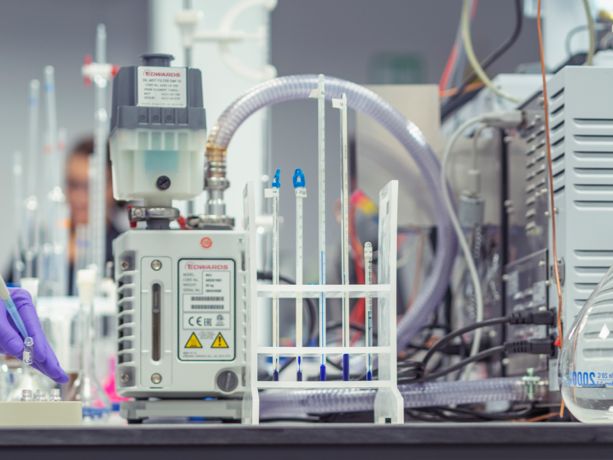Scientists Unveil New Technology to Improve Biofuel Production

Moving away from fossil fuels is essential if we’re to reduce our impact on the planet. However, there are often challenges with alternative fuel sources that reduce the commercial availability of them as an option. For example, biofuel production tends to be hampered by the challenge of efficiently breaking down tough plant matter into smaller, more usable components.
On the way to changing this however, is new research from a collaboration between UCR, the Centre for Bioenergy Innovation, and the National Renewable Energy Laboratory, which has developed a new method to improve biofuel production.
Spearheaded by UCR Associate Research Professor Charles Cai, this new study explores the use of a pretreatment technology called CELF – or co-solvent lignocellulosic fractionation – to make biofuel production easier, cheaper, and more environmentally-friendly.
One of the main issues with breaking down plant matter is that the cell walls are made of lignin and biosugars, which are designed to resist decomposition and microbial attacks, giving the plant strength. According to Cai, biorefineries need to use lignin more effectively, adding that ‘lignin utilisation is the gateway to making what you want out of biomass in the most economical and environmentally friendly way possible.’
But how does CELF work? Previous pretreatment methods cooked biomass in water and acid to break down the tough fibres. Instead of relying solely on this process, CELF uses a chemical called tetrahydrofuran (THF) to supplement the mixture. THF is a solvent that helps to make the process more efficient, and makes it easier to extract useful compounds (like lignin).
After using the CELF pretreatment, plant matter like poplar or corn stover (the remnants of the corn harvest) can then be further processed into useful biofuels, extracts, and chemicals. This is especially true for poplar, which was found to produce better results after undergoing the CELF pretreatment.
Another benefit to using the CELF pretreatment as part of the biofuel manufacture process is that it allows for a better utilisation of lignin. Older biorefineries that only use a water and acid mixture struggle to extract useful lignin – instead it’s mostly used as a supplement for the heat and energy required to complete the process. Using CELF makes it easier to extract lignin that can be used for other purposes.
The CELF pretreatment method also has the potential for producing usable, and renewable, chemicals. These could go on to build bioplastics and food flavourings – and even absorb some of the carbon found in biomass, reducing the amount that’s released as carbon dioxide.
As of now, this research is still ongoing, with the team being awarded a new grant to create a small pilot plant at UCR to further test this process.
The Lab: premier materials testing in the North West
If you’re searching for expert materials testing services, look no further than The Lab. We have an exceptional team of experienced professionals across multiple disciplines, so you can trust that our recommendations and investigations are backed by expert knowledge.
Looking for more fuel specifics? You can discover more with our dedicated pages for fuel and fuel cargo-based expertise at Brookes Bell.
Discover our materials testing services at The Lab
For more industry insights, news, and information, explore The Lab’s News and Knowledge Hub…
Researchers Find an Innovative New Use For Plastic Waste | Scientists Recycle Cigarette Butts to Assist With Biodiesel Production | Scientists Uncover New Way to Make Polymers Stronger
- Author
- Andrew Yarwood
- Date
- 08/05/2024
